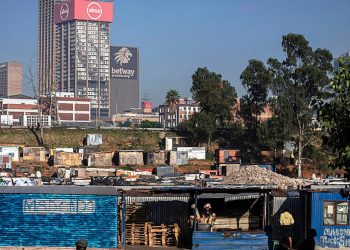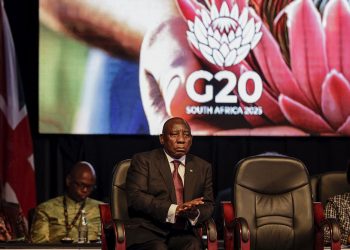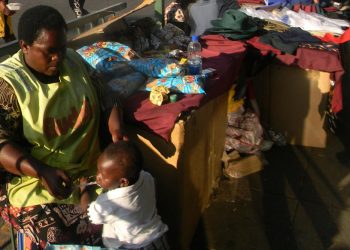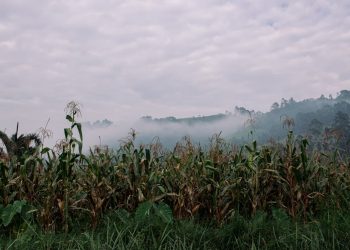South Africa has about 700 state-owned enterprises. They operate across sectors like transport, energy and public utilities, and some are among the largest employers in those sectors.
Entities like these are created and controlled by a country’s government to provide essential services and drive economic development. In South Africa, they were formed in the 20th century, when the government recognised the need to support local industries by providing services such as rail transport, financing and electricity.
As the country industrialised, more state-owned entities were established to serve businesses and communities and to create jobs. In the early 21st century they were also tasked with generating revenue for the state.
But when South Africa’s state-owned enterprises are mentioned in civil society discourse, it’s often for all the wrong reasons. They’re beset by poor service delivery, financial difficulties and allegations of corruption. Their performance has significantly deteriorated in the past 15 years. Unclear mandates, poor management, and insufficient infrastructure and resources are among the reasons.
This has overshadowed their potential to contribute to research, development and innovation which could support economic growth.
We at the Centre for Science, Technology and Innovation Indicators at the Human Sciences Research Council have conducted research to identify what state-owned enterprises need to do to bolster research and development (R&D) and innovation.
We used three state-owned enterprises as case studies. They operate in different sectors: forestry, aviation and energy. They were chosen for their apparent innovation through R&D or other activities. We identified five ways to assess whether a state-owned enterprise is ready and able to achieve its objectives via R&D and innovation: its human capabilities, technological capability, collaborations and partnerships, research infrastructure and governance.
The three organisations successfully integrated R&D and innovation into their strategies. But improvements were needed in the areas of capacity, resources and organisation.
Although state-owned enterprises are unique entities, the framework we developed using those five areas helped us to understand their innovative traits as players within a specific sector. It is a valuable assessment tool that can guide individual state-owned enterprises and policymakers in improving the enterprises’ R&D and innovation outputs. Ultimately, this might contribute to economic growth and the development of specific sectors.
Case study: a forest of opportunities
The South African Forestry Company SOC Limited, founded in 1992, was one of the three organisations we studied. It has a dual mandate. One is commercial, focused on timber harvesting, processing and related activities, both nationally and internationally. The second is socio-economic: to deliver returns to its shareholder, the Department of Public Enterprises, while promoting rural economic development.
In South Africa, the company manages 189,760 hectares of forest, including 121,585ha of commercial plantation. In Mozambique, it manages 82,547ha of forest; 15,258ha of this is commercial plantation. It processes about 10% of South Africa’s logs and produces over ten million seedlings annually.
Here’s how the organisation performed in 2022 (the year we conducted our research) in the five assessment areas.
Human capacity: The R&D team makes up less than 1% of its workforce of about 5,000 people. The organisation’s training academy provides a wide range of programmes for employees and the communities close to its operations. It supports capacity building in the sector through postgraduate bursaries.
Technological capacity: The organisation’s ability to use R&D and technology to achieve its business goals spans the entire timber value chain. The organisation also has non-timber capabilities. These include community-based forestry, training and eco-tourism.
Collaboration: There are strong collaborations with universities, research councils, communities and global and local organisations. This helps to build capacity and to solve different operational problems. It also grows relationships with communities.
Research infrastructure: The company conducts R&D at its nursery in Tweefontein in the Western Cape province and R&D centre at Sabie in Mpumalanga province. For instance, timber tissue culture research is done at the centre to improve lumber yields over time. The centre has state-of-the-art equipment and more is being sourced.
Governance: The organisation recognises the importance of R&D and continues to invest in it. An innovation portfolio is part of its executive structure. However, it hasn’t achieved its capital investment goals. It also does not have strategies for intellectual property management or technology transfer.
Room for improvement
All three of our case studies had made R&D and innovation activities part of their strategic planning. They also had clear examples of innovative performance and did well when it came to collaboration.
Still, there was a lot of room for improvement. All three entities needed to hire more researchers and technicians. All three also face the challenge of using the technological knowledge and systems they have developed over years towards generating income from innovation. This can be done through commercialising intellectual property.
Research infrastructure is an area of concern for all three entities. They need more long-term investment. We also found that long-standing R&D programmes needed to be refreshed. More proactive approaches to innovation and the commercialisation of intellectual property could help.
Going forward
We believe that our analysis and the resulting indicators can be used by all South African state-owned enterprises to assess what they need to achieve more R&D and innovation. It’s a tool for them to track their progress in becoming more innovative, and going beyond their core service delivery mandates.
![]()
Jacqueline Borel-Saladin works for a research council that receives funding from the Department of Science Technology and Innovation.
Nazeem Mustapha works for a research council that receives funding from the Department of Science Technology and Innovation.
Jerry Mathekga works for a research council that receives funding from the Department of Science Technology and Innovation.
















